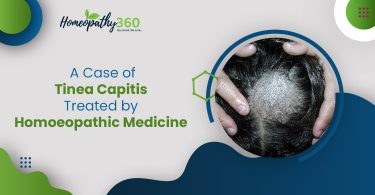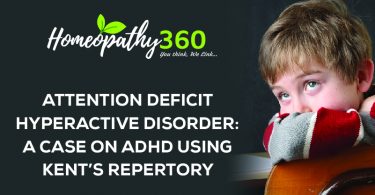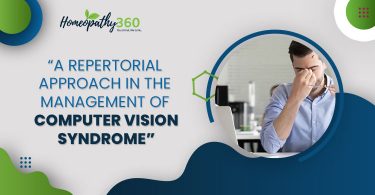AUTHORS:
DR SKANDHAN S KUMAR (ASSISTANT PROFESSOR, DEPARTMENT OF ORGANON OF MEDICINE, FATHER MULLER HOMOEOPATHIC MEDICAL COLLEGE AND HOSPITAL- DERALAKATTE) UNDER THE GUIDANCE OF
DR JACINTHA MONTEIRO (PROFESSOR, DEPARTMENT OF ORGANON OF MEDICINE, FATHER MULLER
HOMOEOPATHIC MEDICAL COLLEGE AND HOSPITAL- DERALAKATTE)
CO-AUTHOR:
DR SR SELMA VARGHESE (PG SCHOLAR -MD – II DEPARTMENT OF ORGANON OF MEDICINE) FATHER
MULLER HOMOEOPATHIC MEDICAL COLLEGE AND HOSPITAL MANGALORE).
ABSTRACT: A known case of allergic rhinitis treated homeopathically with constitutionally (Phos) and Aurum Triumph on acute basis. The parameters used for the analysis of prognosis are IgE level and Absolute eosinophil count.
KEYWORD: Constitutional medicine, Allergic Rhinitis, Homoeopathic Similimum, IgE level
ABREVATIONS: + = present, G = good, < = aggravation, > = amelioration, s = same, D = decreased.
INTRODUCTION: The word allergy means a hypersensitivity to innocuous or harmless substances in the environment. It is also defined as the adverse physiological reaction resulting from the reaction of an antigen with humeral anti body or lymphoid cells. As early as 1820’s our master Dr. Samuel Hahnemann, while conducting drug proving on healthy human beings, noticed peculiar types of individuals who over reacted or reacted to certain things to which majority did not show any response. He termed this peculiar state as Idiosyncrasy. The term Idiosyncrasy comes quite close to the present-day terms. i. e Allergy and Hypersensitivity. The Allergy was introduced in 1906 by Von Pirquet who defined it as altered or changed reactivity. The allergic reaction varies from mild irritation and discharge to severe anaphylactic shock. In the noses of allergic individual’s contact of the allergen with cell bounded IgE produces a localized anaphylactic reaction causing the symptoms of allergic rhinitis.
In the management of allergic rhinitis, the conventional system of medicine aimed to decrease the episodes of allergy by giving antihistamines and nasal decongestants with frequent use of glucocorticoids. Because of these antihistamines the child will become drowsy whole day keeping away from routine activities including the studies. In spite of all advances in management of allergic rhinitis, its incidence in children is increasing because unless and until the basic tendency is not corrected there is no use of exhaustive management. Thus, there is limited scope in conventional system of medicine.
As Homeopathy is a system of medicine which works on inspiring the humoral or the immune mechanism of the body from its latent or overt reaction, it is there by the best form of medicine to treat any allergy. Here the cure is obtained by constitutional treatment.
The sum total of the individual characteristics in the 3 planes – emotional, intellectual and physical – depicts the constitution. This sum total is the resultant of the early environmental factors, right from the time of conception, acting on the hereditary plan of organization as determined the genes. Therefore, individual illness cured if only we can clearly understand the constitution.
The constitutional medicine has a capacity to correct the tendencies and abnormal behaviors and reactions to the environment. Constitutional medicines are useful in overcoming chronic diseases which have a constitutional basis. Constitutional medicine should be prescribed only after the acute crisis is overcome with the help of acute medicine.
CASE HISTORY: A 59-year-old male came with the complaints of sneezing 2+, watery nasal discharge and nose block which is more on night2+, dust exposure2+ and winter season, he is allergic to dust along with complaint patient having burning in eyes and lacrimation. He came with a reports AEC: 430 Cells/cmm,IgE: 596 IU/ml.He took allopathic medicines for the presenting complaints.
PAST HISTORY:
Hemorrhoids 15 years back
FAMILY HISTORY:
Mother –TYPE 2 Diabetes mellitus
TREATEMENT HISTORY:
Allopathic medications for presenting complaint
PATIENT AS A PERSON:
Appetite – Good
Thirst – thirsty 3litre / day.
Craving – sweets 3+
Aversion – nil.
Bowel habit – once per day, no difficulty
Bladder habit – 3 to 4 times per day, once per night.
Sleep – Good
Perspiration – general perspiration, normal
Dreams – nothing significant.
Thermals – chilly patient.
Addiction – Nil
LIFE SPACE INVESTIGATION:
Patient hails from a middle socio-economic family. Father was farmer and mother house wife. Had apparently a pleasant childhood. He is a B.com graduate. He has a good friend circle. After the death of his father he took over the agriculture work, but he doesn’t like to do that work.
MARRIAGE: He got married at the age of 28 years. It was an arranged marriage. He has a good relationship with his wife. He has two sons. He used to share his feelings to his wife, he used to get angry easily but forgets very fast he says he likes to mingle with the people and always wants good friends to be beside him , doesn’t take any tension, likes to take responsibility and extroverted in nature.
AS A PERSON:
Likes company
Weeping alone when
Likes travelling
Not interested in work
Anger easily
GERENAL PHYSICAL EXAMINATION:
Moderately built and well nourished.
NOSE: Bilateral turbinate enlarged.
TONGUE: cracked on center of tongue
No other positive findings.
VITAL SIGNS:
BP: 130/80mmHg – right arm – supine position.
PULSE: 72 beats/min
TEMPERATURE: afebrile.
WEIGHT: 72 kg.
SYSTEMIC EXAMINATION:
RESPIRATORY SYSTEM: NVBS heard, no adventitious sounds.
CARDIOVASCULAR SYSTEM: S1 S2 heard, no murmurs.
INVESTIGATIONS DONE BEFORE TREATMENT:
IgE: 596 IU/ml
CLINICAL DIAGNOSIS: Allergic rhinitis
MANAGEMENT:
ACUTE TOTALITY:
Sneezing with watery nasal discharge
Nose block
Eye burning and lacrimation
<dust exposure
<night, <winter
PROVISIONAL REMEDY:
Aurum Triphyllum 6
CONSTITUTIONAL TOTALITY:
| MENTAL GENERALS | PHYSICAL GENERALS | CHRACTERISTIC PARTICULAR |
| Likes company Weeping alone when Likes travelling Not interested in work Anger easily | Craving: sweets Chilly patient | Sneezing with watery nasal discharge Nose block Eye burning and lacrimation <dust exposure <night 2+, <winter2+ |
PROVISIONAL REMEDY:
Phosphorus
Prescription: (10/2/20)
1. Aurum Triumph 6 (3-3-3) (before food)
2. Phosphorus 200 (1pk) tonight HS
3. 3 Grain Tab (1-0-1) (A/F)
Follow Up Criteria
- Sleep
- Appetite
- Thirst
- Bowel and bladder habits
- Sneezing frequency
- Watery nasal discharge
- Burning eyes and Lacrimation
Follow up No.1: 6/2/20
| 1 | 2 | 3 | 4 | 5 | 6 | 7 |
| G | G | G | G | + | S | S |
c/o itching in bilateral ears present
PRESCRIPTION:
- SL
(4 Pak) HS Weekly
- Aurum Trimph 6 (3-3-3) (before food)
- Nat Sul 6x (1-0-1) (A/F) FOR 1 MONTH
Follow up No.1: 11/3/20
| 1 | 2 | 3 | 4 | 5 | 6 | 7 |
| G | G | G | G | > | > | > |
c/o itching in bilateral ears better
No new complaints
PRESCRIPTION:
- SL (4 Pak) HS Weekly
- Aurum Trimph 6 (3-3-3) (before food)
- Nat Sul 6x (1-0-1) (A/F)
Follow up No.3: 3/9/20
| 1 | 2 | 3 | 4 | 5 | 6 | 7 |
| G | G | G | G | > | > | > |
No new complaints
PRESCRIPTION:
- Phos 200 (1pk) tonight HS
- SL (4 Pak) HS Weekly
- Aurum Trimph 6 (3-3-3) (before food)
- Nat Sul 6x (1-0-1)
CASE SUMMARY:
Patient named Mr. XY, came with the complaints of sneezing 2+, watery nasal discharge and nose block with raised AEC and I IgE levels. The case was diagnosed as allergic rhinitis. Aurum Trimph 6 was prescribed as an acute remedy and followed it up with Phos 200 constitutionally. Patient became asymptomatic and significant reduction in the I IgE levels which denoted the good prognosis of the case.
INVESTIGATIONS DONE AFTER TREATMENT:
IgE: 256 IU/ml
REPORTS BEFORE & AFTER TREATMENT:
| BEFORE TREATMENT: IgE: 596 IU/ml | AFTER TREATMENT: IgE: 256 IU/ml |
INVESTIGATION REPORT BEFORE TREATMENT:
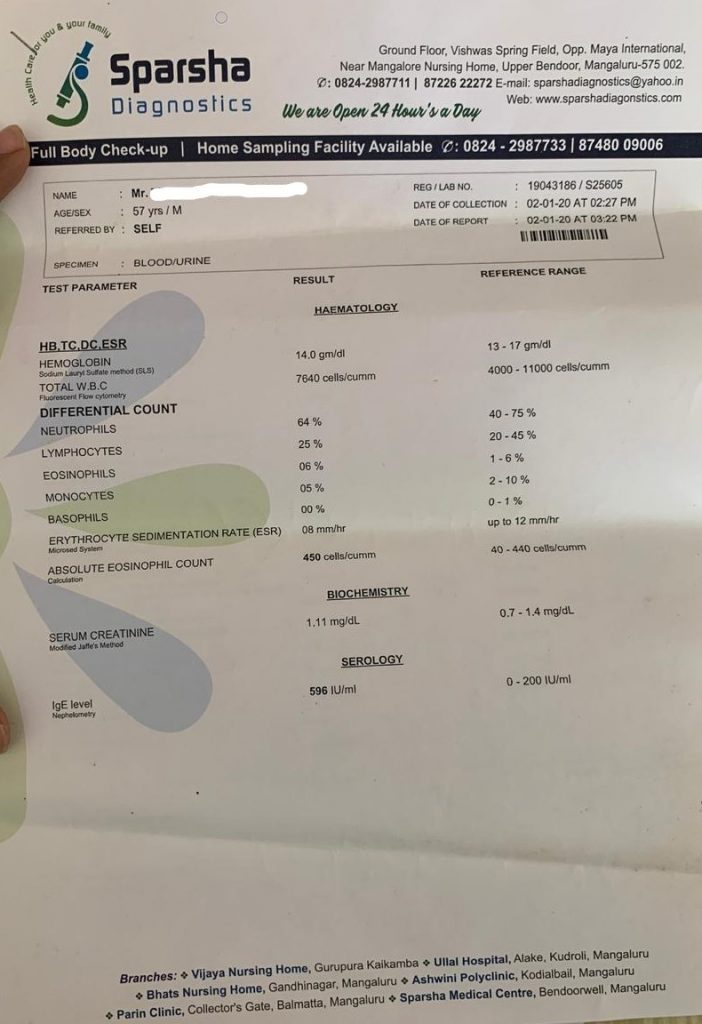
INVESTIGATION REPORT AFTER TREATMENT:
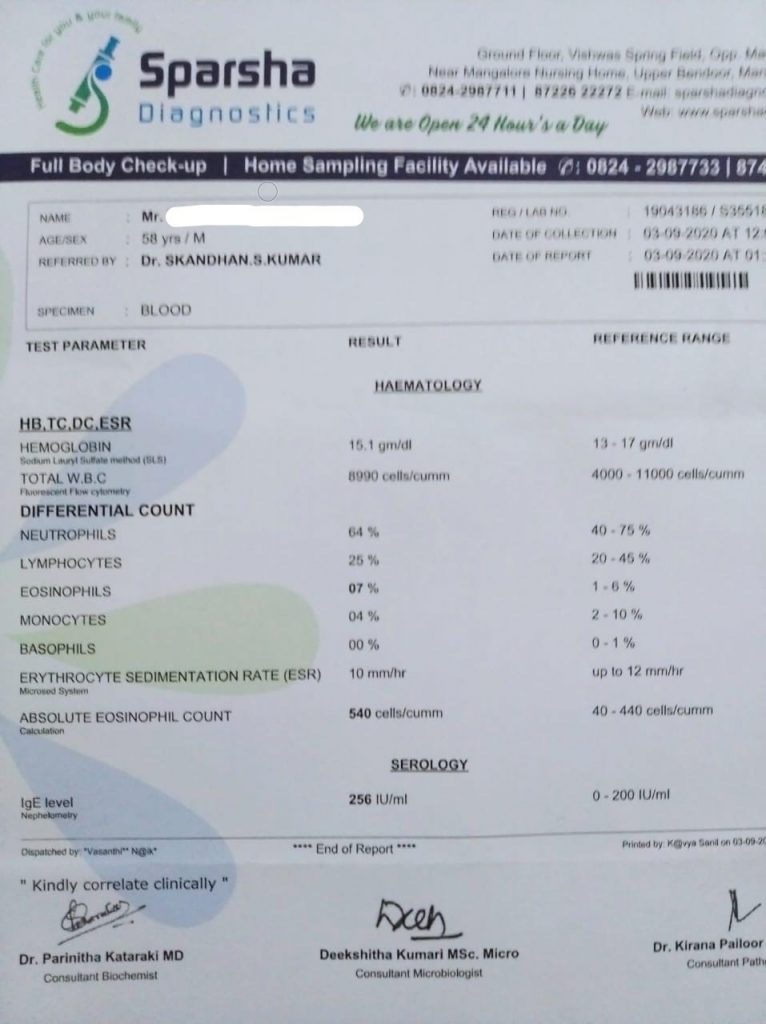
CONCLUSION:
Finally, I would like to suggest that, in Homoeopathy the totality of the symptoms is the core of the case and always has to be written out carefully and that is all we know about the internal nature of sickness as its nothing but the reflection of the internal essence of the disease outwardly in the form of signs & symptoms. Then the proper administration of the similar remedy will always definitely constitute the art of healing in a holistic way, so I suggest that each case of upper respiratory tract infections must be treated in its individual way with most appropriate Homoeopathic remedy.
REFERENCE:
- Sainani. G. S., API Textbook of Medicine. 6th Edition. Association of Physician of India. Mumbai.
- Harrisson Tinsley R. Harrisson’s Principle of Internal Medicine, Vol I, 18th ed. USA: McGraw Hill; 2012.
- Boericke W. New Manual of Homoeopathic Materia Medica & Repertory. New Delhi: B Jain Publishers(P) ltd. 2002.
- Boericke W. Organon Of Medicine by Samuel Hahnemann; Sixth Reprint Edition. New Delhi: IBPP; 2001.
- Dhawale M.L. Principles and practice of Homoeopathy. Part-I, by Dr. Page No.- 24.
- National Journal of Homoeopathy, www.njhonline .com. vol-9, 95th issue August 2007. Page No – 20.


